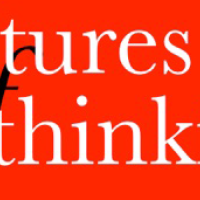
The 8 Forces that Shape Group Culture
PUBLISHED:Resource Summary
EXPECTATIONS: Recognizing How Our Beliefs Shape Our Behavior
ex•pec•ta•tions |,ekspek’tāSH ns| noun: A set of strong beliefs surrounding future outcomes and anticipated results. As a culture shaper, expectations operate as “belief sets” or ‘action theories’ that influence our own efforts in relation to the achievement of desired goals and outcomes with respect to our teaching. In this way, expectations not only set our course, but also act as an internal compass that keeps us moving toward our goal. It is important to note that this departs from the way teachers more typically think of “expectations”, that is, as an explicit expression of standards used to direct and inform the behavior of others.
LANGUAGE: Appreciating Its Subtle Yet Profound Power
lan•guage |’laNGgwij| noun: The system of communication used by a community to negotiate shared meaning and build group coherence and understanding around ideas, behaviors, and actions. As a culture shaper, language helps us to direct attention and action. However, the words and structures that make up language not only convey an explicit surface meaning, but also impart a set of deeper associations and connections that implicitly shape thought and influence behavior. This is the hidden power of language: Its ability to subtly convey messages that shape our thinking, sense of self, and group affinity.
TIME: Learning to Be Its Master Rather than Its Victim
Time |tīm| noun: The “containers,” consisting of measurable periods, that we allocate, assign or use to accomplish tasks of our choosing. As a culture shaper, all of these conceptions of time are in play. Our allocations of periods of time reflect our values. Our sequencing of events, construction of moments, and reflections on actions allows us to scaffold and draw a connecting thread through learning occasions to create a unity. Finally, our ability to generate, sustain, and capitalize on periods of total engagement allows us to create the energy needed for learning and thinking.
MODELING: Seeing Ourselves through Our Students’ Eyes
mod•el•ing |’mädl-iNG| (Brit. modelling ) verb: To display, demonstrate, or draw attention to as an example for others to follow or imitate. As a culture shaper, modeling operates on both an explicit and an implicit level. Explicitly, we may demonstrate techniques, processes and strategies in a way that makes our own thinking visible for students to learn from and appropriate. Implicitly, our actions are constantly on display for our students. They see our passions, our interests, our caring, and our authenticity as thinkers, learners, community members, and leaders. Adult models surround students and make real a world that they may choose to enter or reject.
OPPORTUNITIES: Crafting the Vehicles for Learning
op•por•tu•ni•ties |äp r’t(y)oonitēs | noun: A set of conditions or circumstances that make it possible to do or achieve something. As a culture shaper, the opportunities present will serve either to constrain or enhance the activity of both individuals and the group as a whole. Although it is possible for opportunities to lie hidden, remain untapped, or to languish; in strong cultures rich opportunities for growth, advancement, and creativity are prominent. In a culture of thinking, these types of opportunities dominate the landscape, guiding and shaping the activity of the group and engaging all individuals.
ROUTINES: Supporting and Scaffolding Learning and Thinking
rou•tine |roo’tēn| noun: A sequence of actions designed to achieve a specific outcome in an efficient and productive manner. As a culture shaper, routines represent a set of shared practices that constitute a group’s way of doing things. They are the classroom infrastructure, guiding much of the activity that happens there. Routines—whether they are for management, participation, discourse, instruction, learning, or thinking—help to minimize confusion, reduce uncertainty, and direct activity along known paths. Ultimately, routines become patterns of behavior for both individuals and the group. Of particular importance in learning groups, is the presence of thinking and learning routines that help to direct, guide, and scaffold learning and thinking.
INTERACTIONS: Forging Relationships that Empower Learners
in•ter•ac•tions |int r’akSH ns| noun: The dynamic phenomenon that emerges when two or more objects have an effect upon one another. As a culture shaper, interactions form the basis for relationships among teachers and students, students and students, and teachers and teachers. Interactions knit together the social fabric that binds individuals together in community. The Interactions among group members help to define the emotional climate, tone, or ethos of a place. In a culture of thinking, teacher’s interactions with students show a respect for and an interest in students’ thinking while nurturing their development as valued, competent individuals able to contribute effectively to the group.
ENVIRONMENT: Using Space to Support Learning and Thinking
en•vi•ron•ment |en’vīr nm nt| noun: The physical space occupied by a group or individual, including its design, aesthetic, setup, displays, artifacts, and furnishings. As a culture shaper, the physical environment is the “body language” of an organization, conveying its values and key messages even in the absence of its inhabitants. The physical environment of a school or classroom will dictate how individuals interact, their behaviors, and performance. The physical space can inhibit or inspire the work of the group and the individual. Although most educators inherit a physical environment fashioned for an old paradigm of learning, there is still much that can be done in the design of that space to facilitate and promote a culture of thinking.


-
-
-
-
-
-
Support PZ's Reach